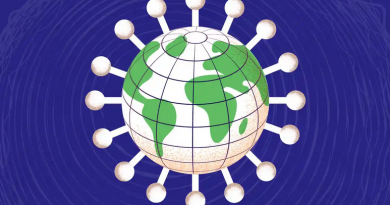Improve Online Learning and More with Artificial Intelligence
Artificial intelligence is gaining traction in classrooms, research labs, and physical plants on campus.
In 2015, Ashok Goel and his colleagues at the Georgia Institute of Technology informed a class of students that a new teaching assistant named Jill Watson would join their artificial intelligence course.
However, they left out an important detail: Jill Watson is herself an artificial intelligence agent. It wasn’t until late in the term that students started to suspect that the answers to their online queries were not from a flesh-and-blood TA. Since then, Jill Watson has participated in 17 online and in-person classes, at both undergraduate and graduate levels, in subjects ranging from biology to engineering and computer science. Meanwhile, Georgia Tech continues to explore the potential of AI in higher education.
The academic landscape was already being transformed by economics and technology before the massive disruption of COVID-19. AI can play a key part in this new educational reality, says Goel, a computer science professor and human-centered computing director of Georgia Tech’s Design & Intelligence Laboratory.
“The old normal is gone forever,” Goel says. “Even when students return to campus, they’ll be returning to more online and blended courses, and we’ll be looking for ways that AI can enhance those classes.”
Personalizing Online Classes: The Potential of AI
The impact of COVID-19 on AI in higher education is hard to predict, says Kathe Pelletier, director of Student Success Community Programs at EDUCAUSE. The economic impact of the pandemic may cut spending in research and development, but institutions could look to AI agents for efficiencies as they operate with fewer staff, she says.
The forced move to online teaching did crack some cultural barriers that have slowed the adoption of AI tools and the adaptive learning strategies they support, says Pelletier. “Some faculty members who have historically resisted change began to recognize the value of all sorts of technologies during the lockdown.”
Enabling adaptive learning, which personalizes learning for individual students, is one of the most promising aspects of AI, she says. However, realizing that (and the rest of the technology’s potential) will take time.
“AI can process a tremendous amount of data and give students what they need when needed,” Pelletier says. “It extends the human capacity to access information, to optimize research and make it more efficient. It can also be the basis for more personalized learning pathways. But humans must develop algorithms for those pathways, and development time is significant.”
Using AI to Maximize Efficiency, Improve Quality of Classes
Goel acknowledges the arduous development process that produces AI applications. The original teaching assistant application initially took over 1,500 hours to program, even using IBM Watson technology. However, a sibling application, dubbed Agent Smith (a nod to The Matrix), can clone a Jill Watson for a specific course with about 10 hours of human input, Goel says.
“We want to use AI to build AI,” he says. “We’re working to take Jill Watson to the Georgia Tech level, where it can be used for any class here. Eventually, we want to share the technology with other universities and with high schools.
Agent Smith means I could go to a busy middle school teacher and offer her the support of a Jill Watson with the investment of just 10 hours of work.”
One variation on Jill Watson can independently read documents and answer questions about, for example, a syllabus or a reference manual. Another, VERA (Virtual Ecological Research Assistant), enables users to construct conceptual ecological models and run interactive simulations.
Yet another assistant, named SAMI (Social Agent Mediated Interaction), in development, is designed to address a lack of social contact and emotional engagement for online students by alerting them to the interests and backgrounds they share with classmates.
“Can AI build better, stronger human interaction? We hope so,” Goel says. “But the application also raises questions of data privacy and security, bias, and trust, which we’ll have to answer as we continue with AI.”
A Better Way to Learn a Foreign Language
Students of the Chinese language at Rensselaer Polytechnic Institute (RPI) can be encircled by a panoramic screen and find themselves surrounded by human-sized images in what could be a Beijing marketplace. One student’s unscripted negotiation with a vendor might be interrupted by another shopkeeper negotiating the price. Both merchants are AI agents developed as part of the Mandarin Project.
RPI was the first university in the U.S. to be given access to IBM’s Watson AI technology, which led to the creation of the Mandarin Project in 2012. From there, RPI and IBM established the Cognitive and Immersive Systems Lab (CISL) to explore the use of AI to stimulate “embodied learning,” says CISL Associate Director Jonas Braasch.
“We want students to learn how to translate what they’ve learned from textbooks into the real world,” he says. “Because AI has a long history in gaming, we use similar techniques like interactive engagement with synthetic characters, along with the aspect of rewarding success, rather than marking off for mistakes.”
Currently, the Mandarin Project and CISL are only available onsite, but COVID-19 has prompted researchers to explore adapting the technology for different delivery modes.
At CISL, AI in higher education aims to support human instructors, not replace them with bots, Braasch says. “Our systems can increase engagement, and that increases learning. AI can increase the fun of learning.”
Smart Facilities: How Artificial Intelligence Reduces Costs
AI-based technologies are central in building operations at the University of Iowa. Leveraging IoT data from sensors embedded in heating, cooling, electrical and security systems, the university relies on AI to manage energy use, maintenance expenses, and user comfort in 70 percent of its academic buildings, says Don Guckert, who retired in July as Iowa’s associate vice president for facilities management.
“We’re taking advantage of what’s already in place with our building and mechanical systems and using artificial intelligence to optimize energy consumption and maintenance costs, reduce risk to business continuity and increase the comfort of our buildings,” Guckert says.
The university has expanded a fault detection and diagnostics project in the past three years to cover more than 55 buildings. The initial investment paid for itself through reduced energy and maintenance costs in approximately a year, Guckert says.
Some staff remained when Iowa shut down its campus in March and moved to online classes. Should one test positive for COVID-19, access card data can trace the person’s movements, thus simplifying contact tracing and identifying areas for decontamination, Guckert says.
Using AI, he continues, is an effort to move beyond the traditional reactive maintenance model. “As an industry, facilities management has always been complaint-based. We wanted to use technology to get ahead of problems before they happen.”
Source: https://edtechmagazine.com/higher/article/2020/08/improve-online-learning-and-more-artificial-intelligence




